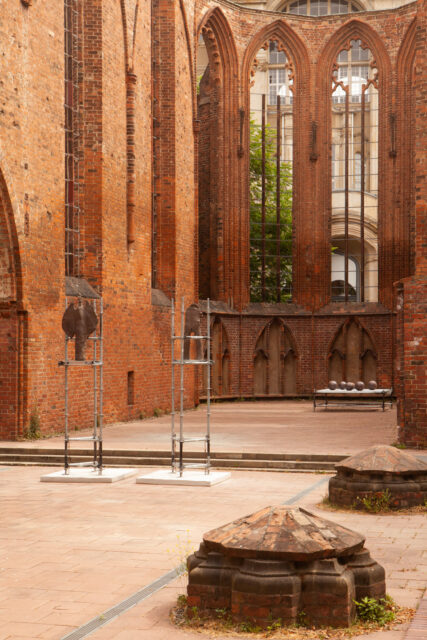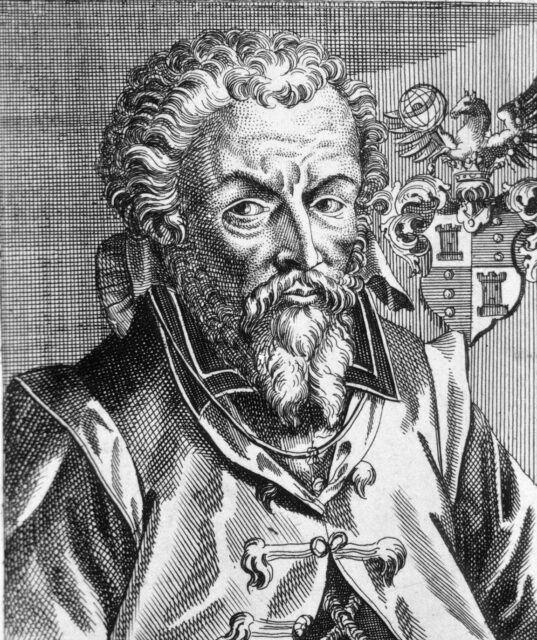From Franciscan monastery church to memorial and exhibition place of contemporary art
750 years of history of Klosterruine Berlin
Chapters
Secularization
Station 3
In the course of the Reformation, the Franciscan convent in Berlin is dissolved in 1539. However, the Franciscans are given lifelong residential rights in the monastery building. In 1571, the last monk, Brother Peter, dies and parts of the former monastery building are left to Leonhard Thurneysser, a medical scholar at the court of the Brandenburg Elector Johann Georg. There he sets up his flat, a library, a laboratory and Berlin’s first printing press. In 1574, the first state school in Brandenburg is founded – the Gymnasium Zum Grauen Kloster – and moves into parts of the monastery building. The name goes back to the grey robe typical of the Berlin Franciscans. The grammar school develops into one of the most important educational institutions of the Berlin bourgeoisie. Former pupils include the architect Karl Friedrich Schinkel, the educationalist and nationalist publicist Friedrich Ludwig Jahn and the first Chancellor of the Reich, Otto von Bismarck. Between 1842 and 1845, extensive renovation work and historicising changes are carried out according to designs by the architects Christian Gottlieb Cantian and Karl Friedrich Schinkel.

![Innenraum_Lithographie_1842-1[1]](https://cms.klosterruine.berlin/app/uploads/2023/03/Innenraum_Lithographie_1842-11-640x416.png)







